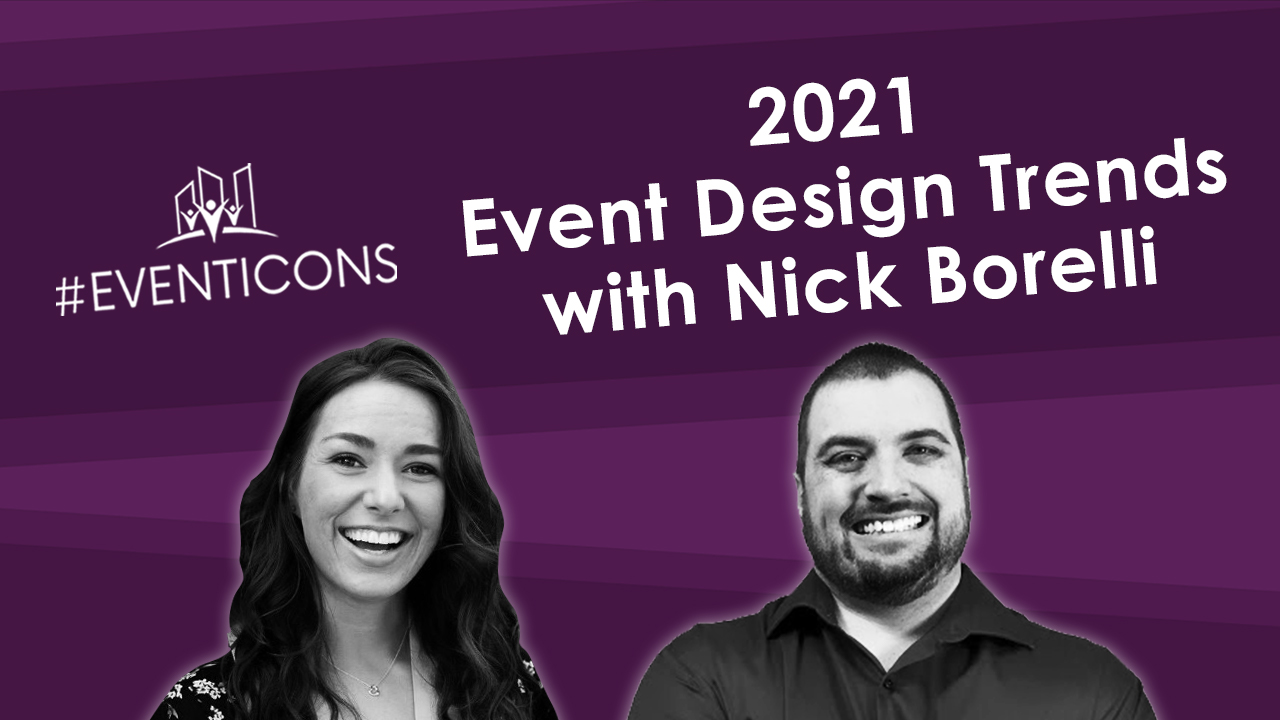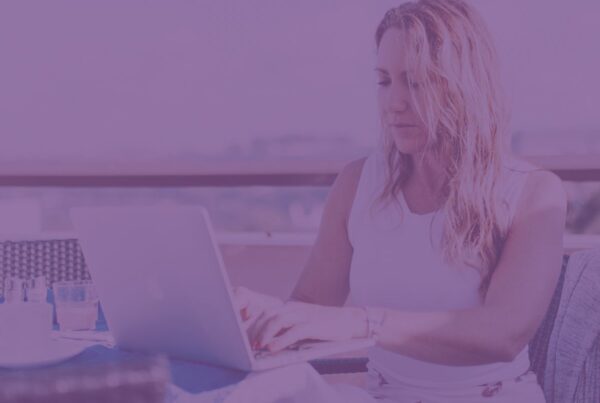New year, new trends! That’s right, Endless Events is back at it with the best content to help you navigate the 2021 landscape. And to kick things off, we have a brand new episode of #EventIcons. Now that the new year has rolled in, event profs are eager to know the trends that will shape the months to come. And while there’s a lot to cover, we figured that there’s no best way to start January than by outlining the 2021 event design trends that will define the industry.
2020 was a challenging time for all of us, but now that the dust has somewhat settled, it’s time to up our game. So who better than Nick Borelli, President of Borelli Strategies, Event Brew host, and overall industry icon to get things moving? Join us on this incredible conversation about the 2021 event design trends that are set to become the next big thing!

What We Saw In 2020
Last year hit us like a brick. And for most planners, it was more about pivoting than it was about actually designing. But now that 2021 is here, things are about to change. “I think this is the first year where there’s going to be a real mass event design landscape for virtual events”, says Nick. “I don’t believe the majority of virtual events that took place in 2020 were truly designed, at least to their full potential”.
“People talked about the word pivot so much that it became a drinking game. Now, there’s gonna be a lot less face-to-face attendees, period, at the very least. So this is the year where intentional experience design will be used as opposed to pivoting, which is doing the best that you can. This is going to be more about, okay, we know this is going to happen. So let’s use actual design thinking to create some events”, he adds.
Defining Event Design
“I think it has become something that is either ambiguous or something that is used in many different ways. And I think that prior to that, it was exclusively used as a way to explain how you added accouterments and knickknacks and colors and flowers and balloons to an event. And that was event design. It was like picking a theme, for aesthetics”, Nick explains.
“But then there was more investment in live events from CMOs and it was much more ROI driven. So it became more of a serious business where there were specific expectations coming out of it. Then there was more design thinking involved, and design thinking is a methodology that is really flexible and there are lots of variations. The purest design is design thinking, which can be applied down to the floor arrangements all the way up to strategic choices made in order to create the experience that you desire for your attendees”, he adds.
The Stages of Design Thinking
“It starts with empathy. So you have to empathize, you have to really feel what it’s going to be like for your attendee to go through this event. What their pains are and what their expectations are and the nuances that make them up. You have to define what your event is for, what’s the goal of it. Then you do my favorite phase, which is ideate”.
“So you try to take a stab at what you think the attendees will do in order to create the behavioral change that you want. You can really bolster the ideation phase by using data, really listening to what they’re saying, saying with their feet, how they register, just all the different ways that they communicate with you, in order to really inform your ideation phase. And then you basically create an event. You prototype. And that’s a really scary idea, I think for most planners. Because your first attempt at something, it could fail and failing is okay”, Nick continues.
“Ultimately, the last phase is testing. So that is actually taking what you learned, and not just having a post-event meeting, but actually using that as the launch to the next thing. And taking everything you put together and say, okay, what did we learn? How do we change? How do we move forward? So empathize, define, ideate, prototype, test – that’s design in its simplest form”.
2021 Event Design Trends
“We’re going to have to empathize with our attendees more so than ever because they have been disrupted at some level. We have to think about how they’ve been disrupted and how that plays into our empathizing stage when we get into things. And we have to say, okay, even the data that we’ve had previously and the tests that we’ve run on prototypes, and the feedback that might not be as applicable this year as it has been in the past”, explains Nick.
“Because even before we get into how we will execute events in a post-pandemic world, we have to really get into the mindset of the attendee. Virtual or otherwise. The virtual attendee, I think requires a ton of empathy right now, because I mean, how frequently are you hearing the term Zoom fatigue? So there are design trends coming up in 2021 that start with empathy“.
Starting With Empathy
“I think a design trend that makes the most sense, rooted in that empathy, will be shorter events over a longer period of time. For virtual, you have the opportunity to not overload the people with education and actually spread that over a period of time. So things stick, but better than that is that you have the ability to more quickly implement what you learned”.
“So you learn something that day, you get to use it that day. And then the next day you have the chance to potentially come back and talk about how you implemented that in order to make it conversational. To make it more community-centric. And really when you’re designing educational conferences or even internal meetings, the metric for success is action”, says Nick.
Another Realm of Inspiration
In the scope of 2021 event design trends, Nick believes that we’ll start seeking inspiration from things outside of events. “The face-to-face events that you’ve produced have some common DNA with, uh, virtual events, but not as much as you would think”, he explains. What we did with virtual was, essentially, “built-up all the things that face-to-face has over virtual”. But now, we need to learn the opposite.
“Taking face-to-face and trying to apply the same criteria of experiential, of sensory washing over and of hospitality and applying it to virtual isn’t going to work. It’s not an experience of hospitality. I think what’s going to happen is that we’re going to start getting inspired by places outside of face-to-face events. I’m looking at e-sports, I’m looking at Peloton, I’m looking at Netflix for sure. So I’m looking at all the places that command attention and are different ways to consume emotional change through a screen. So I think that from a design standpoint, as far as trends, it will come down to adopting some of the things that are working in all these other virtual spaces”, he says.
Aim Higher
“I think that personalities are gonna have to be bigger. And I think that people are going to have to have different kinds of training to be camera ready. This brings me to my last point, for 2021 event design trends, is that if you want an education in virtual events, read books on screenwriting”.
“Ultimately what you’re looking for is structure. Because when you design a virtual event, you’re really designing an experience that is consumed on a screen. Which gives you a lot of freedom in some ways. And then it restricts you in other ways. It gives you the freedom to play around with time and to play around with space in a way that you can’t in face-to-face”, adds Nick.
“I think people need to take a little bit of time to dedicate to how storytelling is crafted. And I think there’s been lip service given in the events industry to storytelling as a trend before, but really it’s still been an aspect of hospitality. We wanna make sure that the food lines aren’t long, that this happens on time. Everything’s about time and time and time and time. And it’s not about how do you emotionally change these people in order to take them through this process that makes them feel this at this time and this at this time?”, he concludes.
Conclusion
And that’s a wrap on yet another incredible edition of #EventIcons! We’re very excited to open the new year with some exciting 2021 event design trends. But this is just the appetizer. Make sure to stay tuned for all the incredible content coming your way about what to expect from our industry in 2021!










